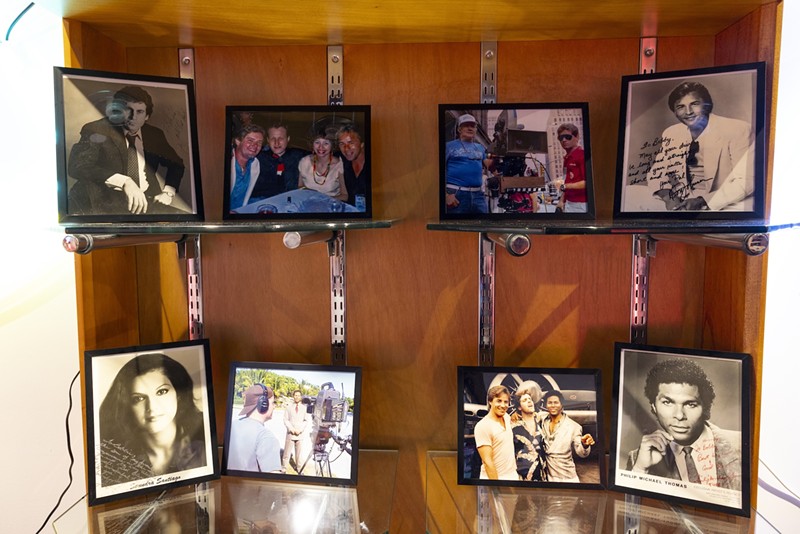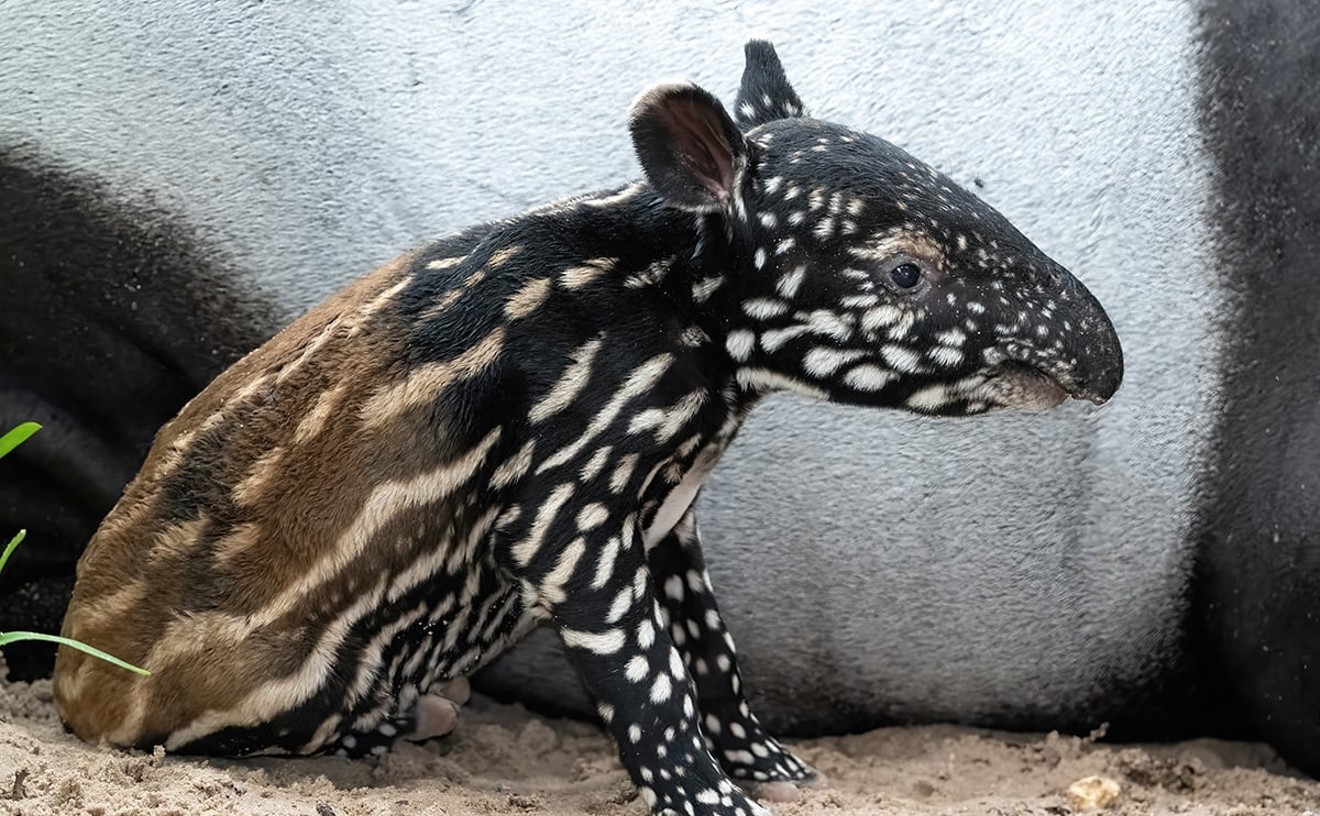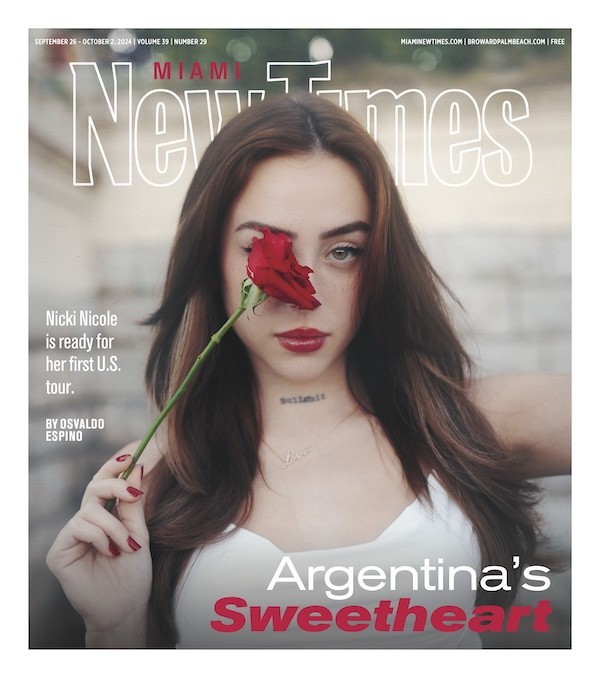It's 1984. I'm sitting in the lobby of the Alexander Hotel, waiting for former boxer and now actor Alexis Arguello to emerge from a meeting with casting director Bonnie Timmerman. We had been nightclubbing into the wee hours, and Alexis asked me to drive him straight to his appointment. My hangover, on a scale from 1 to 10, is an eleven. My eyes are red and watery, and there is a thin white crust of a powdery substance on the rims of my nostrils. Shadows loom over me; I gaze up to see the casting director and Alexis. Bonnie is looking at me, eyeing me slowly, up and down, noticing my navy Brioni suit, silk Versace shirt, alligator Gucci loafers, my Rolex Presidential watch, a small red and black beaded "Chango" Santeria bracelet on my wrist, and about three pounds of gold necklaces, along with a bracelet with Chaim spelled out in diamonds.
Bonnie said, "So, you came trying to look like a character in Miami Vice?"
"No," I said. "Is your cast trying to look like me? I've been dressing this way since 1978."
Forty years ago.
When I heard there was to be a 40th reunion for Miami Vice on South Beach, I immediately booked a ticket from my home in Boston to join in on the festivities. I'm not particularly a fanboy, though I attended the Tribeca Film Festival's Scarface reunion, The Soprano's 20th anniversary at the SVA Theater in Manhattan, and yes, sadly, I have to admit to going to a Comic-Con uncostumed once, but that was specifically to ask Yancy Butler (Witchblade) out for dinner, after having a brief rendezvous with her in 1994, while she was filming Drop Zone in Miami. (If you're reading this Yancy, I am still available.)
I digress.
Anyway, I made my flight from Logan and arrived just in time to attend a meet and greet with members of the cast and crew at the Avalon Hotel on Ocean Drive. I had already learned that the big three, Don Johnson, Philip Michael Thomas, and Michael Mann, would not be in attendance, that apparently, the original organizers had creative differences, and that two separate events were planned, although one was canceled at the last minute.
On the website for the 40th anniversary, VIP tickets were running as high as $750 for two tickets and $550 for one. For that kind of money, I'd expect a "date" with Vanity, who played a call girl in the episode "By Hooker or Crook" in season three, an eightball of "yayo," and a room at the infamous Mutiny Hotel or at least the Airport Executive Inn.
For the next four days, I attended various events, hoping to re-create the hedonistic vibe or at least feel a momentary spark of the excitement that I felt in Miami in the 1980s. The Miami Vice Museum, with an entry fee of $25, was a disappointment. There was a neon pink flamingo like the one I had purchased at Yucky's Head Shop on Main Highway in Coconut Grove (along with my triple beam and mannitol), other neon displays, and a bounteous collection of photos and props from the show. But I had seen much of the same material in New York City at the Museum of the Moving Image. Considering you can go to the Smithsonian and see Dorothy's ruby red slippers from The Wizard of Oz, the Hope Diamond, and the National Portrait Gallery for free — I think you know where I'm heading. One thing I had been eager to see was Derek Hedlund's film on Miami Vice, scheduled for Saturday. Unfortunately, no one came to tell the attendees it had been canceled. C'est la vie.
Was Miami Vice great television like The Sopranos, The Wire, or Breaking Bad? In my humble opinion, it wasn't on the same level, but it was revolutionary in its own right. In the first episode of Miami Vice, "Brother's Keepers," where we hear Phil Collins' haunting "In the Air Tonight" as Crockett and Tubbs tool through Miami in their black Ferrari Daytona against a pitch-dark sky, chrome wheels flashing, low camera shots, contemplative stares, Crockett stopping to call his wife, Caroline, to ask, "The way we used to be together, it was real, wasn't it?" A view of Government Cut, Miami's skyline reflecting light like a million shards of broken glass. Calderone was captured, only to be released by a crooked judge. Then, Crockett and Tubbs arrived minutes too late on Watson Island to see Calderone make his escape by Chalk's Sea Plane, taxiing above Biscayne Bay, saying, "¡Adios, Miami!" I can still feel the goosebumps.
Miami Vice, on many levels, for those of us who lived and survived the late 1970s and '80s in Miami, affected us differently than the show's worldwide audience. In 1981, I lived on West Avenue in South Beach along with the alte kakers and Marielitos. Ocean Drive was God's waiting room, the building awash in pale shades of beige. A few years earlier, Norman Mailer described Miami Beach as an "old lady who wore too much face power to cover the deep wrinkles underneath." And went on to say, "a world of makeup, plastic and prosthetics." Unless you were a Miamian or forced to visit your bubbe or Zeyde, all you knew about South Florida was that it was America's murder capital or, as Time magazine described, "Paradise Lost."
The show shaped people's perspective of a different Miami. Glamorous nightclubs, awash in money and cocaine, exotic sports cars, and the women. Did I mention the women? A few years after the show began its run, Ocean Drive became a mecca of the super cool. Lean young models with their freakishly long, coltish legs parading along the promenade, clutching their black portfolios; Gianni Versace stopping by the News Café to pick up his copies of Vogue Italia, Garzia, and Donna Moderna. Ronnie Wood of the Rolling Stones opened a nightclub.
And me? Well, now that you ask, my world was the real Miami Vice, beginning with me taking up residence at the Mutiny Hotel and nightclub in 1976. I was what was referred to as coca gente, a cocaine person. Throughout the late 1970s and 1980s, I dealt with — or did my best not to deal with — the real undercover cops and informants who plagued my world. They had Calderone and Frank Hackman. We had Griselda Blanca and Miguel Miranda. They had Lieutenant Castillo. We had Raul Diaz and Al Singleton. Was it art imitating life or the other way around?
Many of the show's actors and guest stars descended into my universe. I got to befriend Glen Frey, Dennis Farina (who started as a real Chicago police officer), Bill Russell, and Wesley Snipes, among others. And I'd occasionally bump into Don Johnson at my condo or events like the Miami Grand Prix. And some of Miami's players, I'm thinking of a Mutiny regular, Johnny Hernandez, appeared as a guest star in one episode. Years later, I met former FBI agent Joe Pistone (Donnie Brasco). When I asked him if he had spent any time in Miami when he had worked undercover infiltrating the Bonanno Crime Family in Fort Lauderdale, he replied, "Are you nuts? There were too many cowboys down there!"
For us, the show was entertaining but had no basis in reality. A white cop, who didn't speak Spanish, with a pet alligator named Elvis? Well, then again, what was the name of your black panther, Mario T.? Or informants like Izzy Moreno or Noogie Lamont? Sure, we had more than our share of scumbags, I mean informants, but they didn't offer comic relief. In The Godfather, real mafiosi would quote the lines from the film. We never said, "Hey pal," "nose candy," or "knucklehead" to one another. After the first two seasons, the show's tone changed. It was less imaginative and darker than the prior seasons.
I can't recall where I was or what I was doing when most of Vice ran, save one. On the night of the very last show, on June 28, 1989, at 9 p.m., I was being detained by the DEA, New Orleans Police Department's narcotics division, and a couple of sheriffs from Jefferson County. While waiting for search warrants to arrive, we waited in a hotel security room in New Orleans, ordered cokes and hamburgers from room service, and watched the final episode, "Free Fall," which was also an apt title for where my life was heading. Fortunately for me, things worked out. As I walked out of the room, the DEA agent in charge gave me some good advice. "Chaim," he said, "If you made any money, I'd retire. We're watching you." The following week, I left for Boston. I've been in the car business for more than 30 years, married with two grown children and a granddaughter on the way.
And when I think of my life, where I was in the 1980s, where I was heading and where I am now, and why I had to attend Miami Vice's 40th reunion, I think about that August line about another smuggler in The Great Gatsby: "And so, we beat on, boats against the current, borne back ceaselessly into the past."

Audio By Carbonatix
[
{
"name": "Air - MediumRectangle - Inline Content - Mobile Display Size",
"component": "19274298",
"insertPoint": "2",
"requiredCountToDisplay": "2",
"watchElement": ".fdn-content-body",
"astAdList": [
{
"adType": "rectangle",
"displayTargets": "mobile"
}
]
},{
"name": "Editor Picks",
"component": "17482312",
"insertPoint": "4",
"requiredCountToDisplay": "1",
"watchElement": ".fdn-content-body",
"astAdList": [
{
"adType": "rectangleLeft",
"displayTargets": "desktop|tablet"
},{
"adType": "rectangleRight",
"displayTargets": "desktop|tablet|mobile"
}
]
},{
"name": "Inline Links",
"component": "18711090",
"insertPoint": "8th",
"startingPoint": 8,
"requiredCountToDisplay": "7",
"maxInsertions": 25
},{
"name": "Air - MediumRectangle - Combo - Inline Content",
"component": "17482310",
"insertPoint": "8th",
"startingPoint": 8,
"requiredCountToDisplay": "7",
"maxInsertions": 25,
"watchElement": ".fdn-content-body",
"astAdList": [
{
"adType": "rectangleLeft",
"displayTargets": "desktop|tablet"
},{
"adType": "rectangleRight",
"displayTargets": "desktop|tablet|mobile"
}
]
},{
"name": "Inline Links",
"component": "18711090",
"insertPoint": "8th",
"startingPoint": 12,
"requiredCountToDisplay": "11",
"maxInsertions": 25
},{
"name": "Air - Leaderboard Tower - Combo - Inline Content",
"component": "17482313",
"insertPoint": "8th",
"startingPoint": 12,
"requiredCountToDisplay": "12",
"maxInsertions": 25,
"watchElement": ".fdn-content-body",
"astAdList": [
{
"adType": "leaderboardInlineContent",
"displayTargets": "desktop|tablet"
},{
"adType": "tower",
"displayTargets": "mobile"
}
]
}
]











